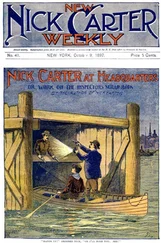This was the environment in which Lori Arnold says she found herself when she got out of prison in 1999. Her husband, Floyd, was in Leavenworth, where he would soon die of a heart attack. Her son, Josh, was eighteen, had graduated from high school, and was working at a Foot Locker shoe store. In eight years, Ottumwa’s Mexican population had grown from zero to the highest per capita in the United States, thanks mostly to the Cargill-Excel plant, where, according to Lori, wages were pegged at five dollars an hour. She was living with her parents, and she took a job at the plant trimming hams. Wearing fifty pounds of protective steel mesh, Lori had ten seconds to sever the cone, or bottom, of a twenty-five-pound hog hind; remove the fat; heave the ham onto a conveyor belt above her head; and resharpen the knife before the next one reached her. The room temperature was maintained at just above freezing, and her feet would freeze inside steel boots. Lori was continually dumping hot water over her boots to try to regain feeling in her toes. Each eight-hour shift, she got two breaks: fifteen minutes in the morning, thirty minutes at lunch. The union had long been dissolved as a condition for keeping the plant open, and she had no insurance, and no access to worker’s compensation should she be hurt. To Lori, who’d been just spent seven years in prison, and had once hidden in her car with her newborn son while Floyd shot at them with a .44 Magnum, life had never felt so hard.
It wasn’t long after Lori took the job at Cargill-Excel that she also began taking stock of the schism in the local crank market. After Lori had gone to jail, the good crank stopped coming to Ottumwa from California—and from her superlab. In Lori’s absence, many of the blue-collar white addicts had come to rely on the local batchers who made their own Nazi dope, of which there was never enough to go around, as the cooks could only make a few grams or ounces at a time. Meantime, Mexican dealers out of Des Moines, Iowa, and Sioux Falls, South Dakota—in an attempt to take over relatively lawless Ottumwa as a lucrative distribution point—had begun flooding the market with Red-P methamphetamine. Red-P dope, or crystal meth, was made at Mexican-run labs in California’s Central Valley and in the state of Michoacán, in west central Mexico, and then driven through ports of entry like Nogales, Arizona, before being distributed throughout the West, the Great Plains, and increasingly, the Southeast.
Back in Lori’s drug-empire heyday, in the late 1980s, Mexican-run superlabs had produced anywhere from ten to twenty-five pounds of meth every two days. By 1999, thanks to the failed DEA legislation monitoring red phosphorus and pseudoephedrine, superlabs were capable of producing up to a hundred pounds a day of crystal meth, which is up to 95 percent pure and therefore offers a much cleaner, more powerful high than the P2P crank of Lori’s early days. Given its purity, the “tweak” associated with coming down off a crystal binge—the paranoia, the Parkinson’s-like shaking, and the schizophrenic hallucinations—was popularly considered to be far easier to handle than it had been with P2P. So, too, did crystal’s translucent quartz-like appearance help diminish meth’s reputation as a “dirty” drug and, as many people at DEA suppose, make meth attractive to a broader range of people. (Eventually “chrissy” would become the drug of choice among urban gays in New York and Los Angeles.) As Lori said, “Crystal was both a crank addict’s and a crank dealer’s dream.”
Still, it was difficult for the Mexican traffickers to take control of the retail meth market. Many whites in Ottumwa, meth habit or no meth habit, resented Mexicans for working at the packing plant for so little money; it was their fault, it was said, that the wages at Excel—and along with them, the hopes of Ottumwa—had plummeted. Mexicans were framed as interlopers, and mistrust or even outright racism was common. Then there was the language barrier. Mexican dealers had a hard time finding customers, despite the fact they employed a strategy of giving away small amounts of highly pure meth in order to create a base of addicts: the same strategy Lori had used on her first night selling crank back in 1984.
By 1999, according to both Lori and a former Mexican employee, Ottumwa’s Excel plant had become a clearinghouse for illegal immigrants. That same year, Cargill-Excel placed newspaper advertisements in the poor, industrial border towns of Juárez and Tijuana offering two free months’ rent to workers who could make it to Ottumwa from Mexico. For Cargill and the rest of the packing conglomerates, employing illegals would appear to have been the best of all possible situations, for the simple reason that these employees, lacking legal identification, didn’t technically exist, and therefore had no rights. Nor were they apt to argue with the harsh conditions of an industry that continues today to have the highest rate of employee injury in the United States. A failed 2001 federal criminal case brought against a Tyson plant in Shelbyville, Tennessee, made clear that corporations would essentially not be held liable for employing or recruiting illegal immigrants to work in the plants. Despite the fact that two Shelbyville managers were caught on tape by federal investigators asking human traffickers for five hundred undocumented workers over four months, Tyson’s defense team successfully maintained that it’s too difficult for Tyson employees to determine who’s who among legal and illegal employees. The ruling institutionalized the notion that employers of immigrants are not beholden to offering the same rights to workers that other companies must, for the simple reason that they don’t know—and don’t need to know—who works for them. Alternatively, how can there be any hope of enforcing laws on people who are not who they say they are? According to two former employees of the Cargill-Excel plant in Ottumwa with whom I spoke (both of whom were in the United States illegally), the going rate on stolen social security cards at the plant in 2005 was one thousand dollars, though the most prolific vendor offered the equivalent of a package deal if you wanted more than one.
On the one hand, what Lori saw back in 1999 made her angry. Who did these Mexicans think they were, she thought, taking jobs from Americans and then selling them dope? On the other hand, Lori could plainly see that the middle of the value chain, the most dynamic part of any economy, was totally undefined: it was wide open because the white addicts simply didn’t like the Mexican dealers. All that was needed was someone with the guts and the connections to approach the Mexican Mafia, as Lori calls them, and start helping them move all their good, cheap dope.
That someone, though, wouldn’t be Lori Kaye Arnold. Lori was on probation for what seemed to her the rest of her life. She had to urinate in a cup every couple of weeks so her parole officer could send the sample to the state lab in Iowa City for drug tests. She had a son to get to know after serving eight years in prison. Lori had amends to make, and Narcotics Anonymous meetings to attend, and a lot of sober time to get under her belt before anyone would start trusting her again. She had new friends to find, too—the people she used to hang around with were either in jail or still using meth, and she knew damn well she couldn’t be near them. She would need to work hard if ever she wanted to pay off her back taxes or move out of her parents’ home. If she could just get her own apartment, Lori thought, she might finally start making up for lost time—maybe her son could even move in with her. And so for a year and a half, Lori left Cargill-Excel most evenings and worked the night shift at Wendy’s, trying not to think about the business that had made her the most famous woman in Ottumwa ten years before.
Читать дальше












